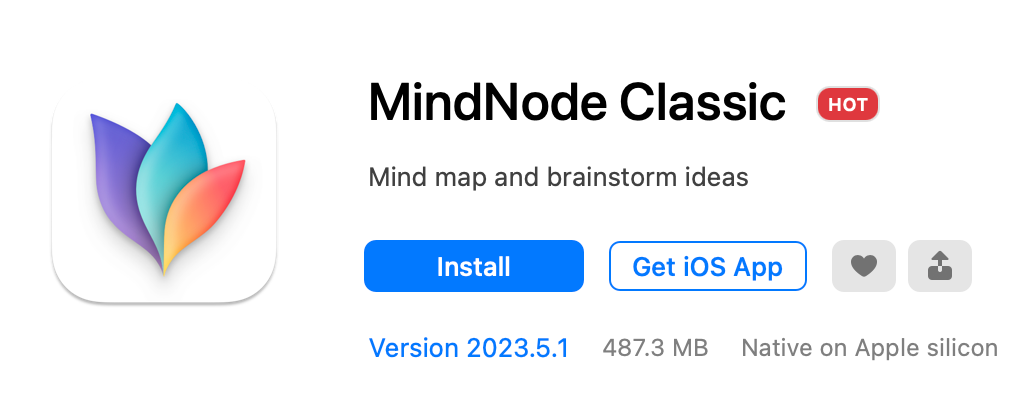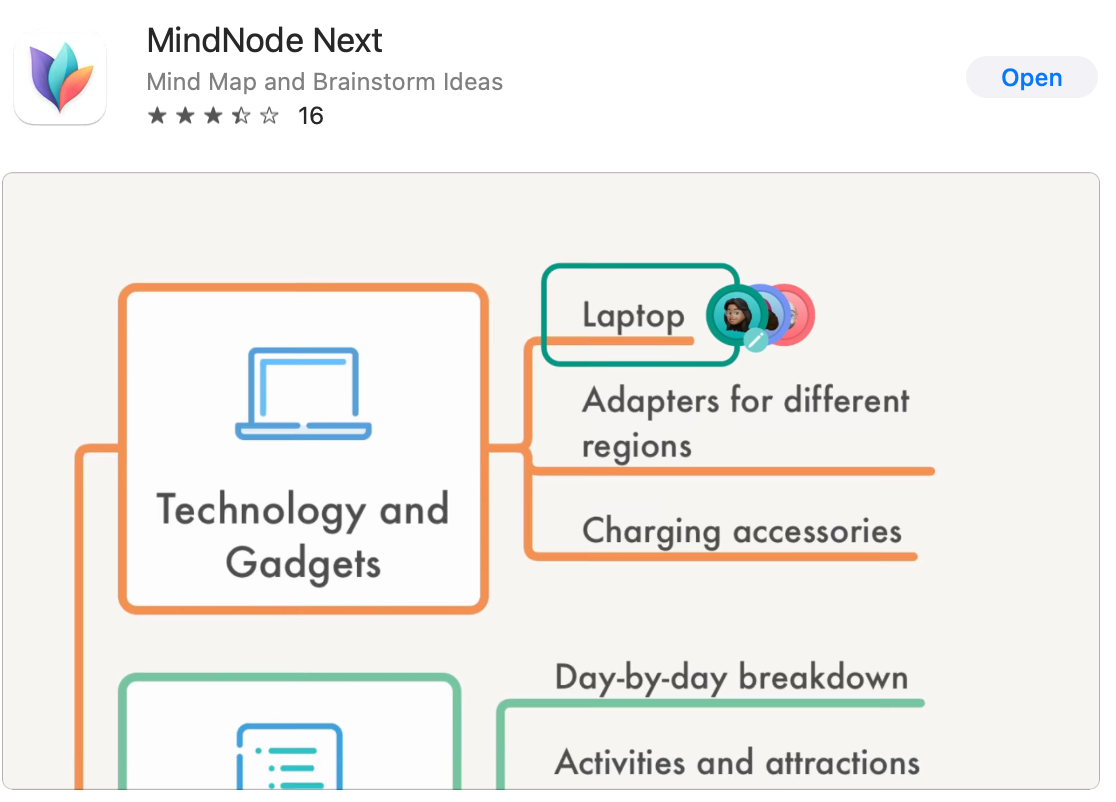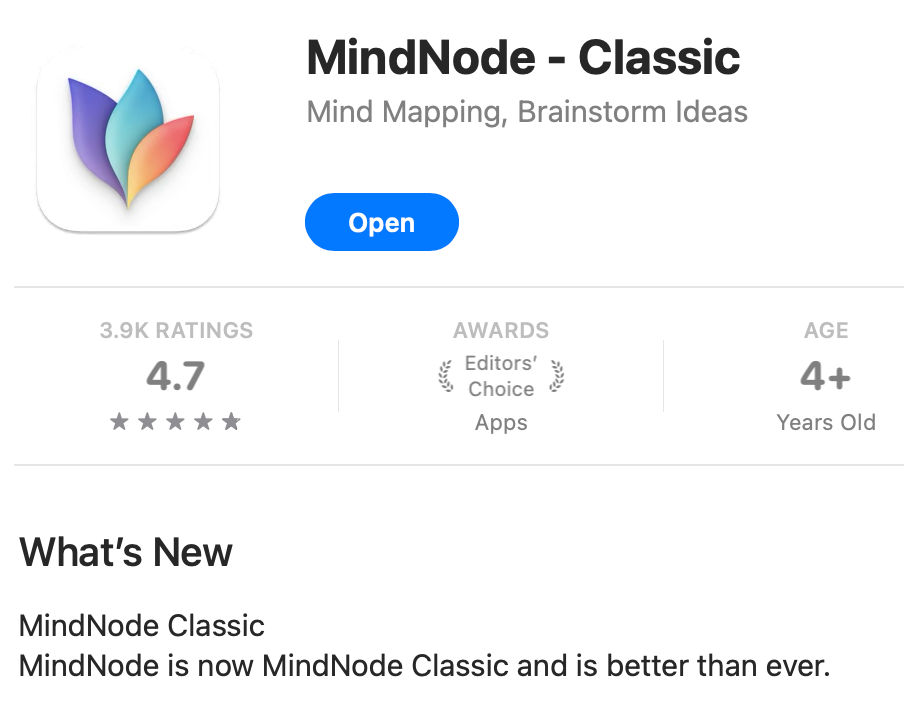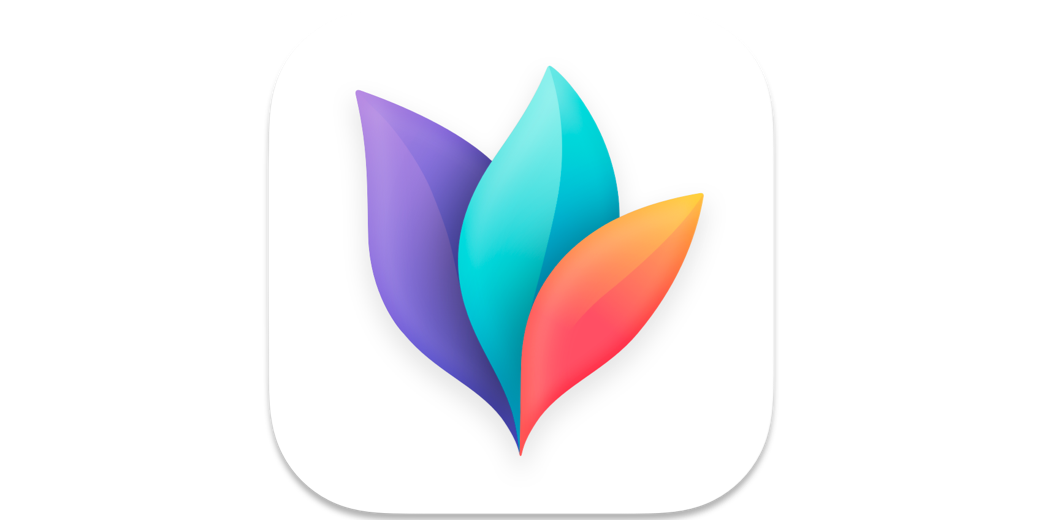When the developer of iThoughts decided to shutter the doors on his business, I chose MindNode as my new mind mapping tool of choice. My post in April entitled RIP iThoughts is probably in my top ten most-commented articles. Many people jumped into the discussion just to say thanks for the trade study while others joined in to offer alternative solutions. It’s been great having a group of people to share a common topic of interest.
Just 9 months later and big changes are coming to MindNode. I’m not ready to call the changes a success but I’m really intrigued by the path the company has taken. Imagine you rewrite your flagship product from the ground up and it’s working great, but it’s not yet in feature parity with the previous version? You have a couple of choices.
One path would be to sit tight and keep working your little coding fingers to the bone until 100% of the features in the old product are available in the new. Or, you could go down a risky path where you release the new version (missing some features) and have it exist almost side-by-side with the original.
That second path is what the folks at MindNode have chosen to do. I think it’s a path with a lot of merit, but it could cause people who don’t understand what’s going on to abandon the new software or leave bad reviews for it. My goal is to explain what they’re doing and then with knowledge, you can decide if you think they’re on the right path.
Naming Convention and Availability
First, let’s understand the naming convention. The original MindNode has been rebranded as MindNode Classic, and the new hotness is called MindNode Next. I think it will be pretty easy to keep those names straight.
For the time being, the only version you can get through Setapp is MindNode Classic. They believe they’ll probably replace it with MindNode Next eventually, but they have to figure out how to make that transition.

In the iOS App Store and the Mac App Store, the only option you’ll see is MindNode Next.

But don’t panic. It’s not gone, it’s just unlisted. At mindnode.com/article/mindnode-classic you’ll find direct links to MindNode Classic in both the Mac App Store and the iOS App Store.

Here’s an even more interesting tidbit — they’re still developing MindNode Classic and adding features. I’m sure new development will slow down as the two versions converge, but it gives me a good feeling about their dedication to a smooth transition. You can run both apps side by side right now and for the foreseeable future. I’m sure they’ll sunset MindNode Classic at some point but it won’t be anytime soon.
If you want to keep up to date on the development of both products, you can go to mindnode.com/releases. When you look at the release page, you need a magic decoder ring (which I’ve suggested they should include on the page). If you see a feature that says 2024.x, that means it’s a feature added to MindNode Next, and if one says 2023.x, it’s for MindNode Classic. I’ve been surprised at how often I see updates on this release notes page.
One more naming convention. You can use MindNode Classic and MindNode Next without paying a single hooneyakker. You get a limited feature set but it might be everything you need. If you want the full feature set, you can subscribe to MindNode Plus (for both versions) for $25/year or $3/month. If you want to compare features between free and Plus, check out mindnode.com/download.
Features of MindNode Next
Let’s talk about MindNode Next. I’m not going to give you any kind of a deep dive on the product until I have time to really dig into the app, and I’ll probably wait to do that until it’s more in feature parity with MindNode Classic.
I keep talking about the lack of features but I haven’t explained what’s missing. The MindNode folks have created a great page where they document (using a mind map) what features are in MindNode Classic, and how they’re progressing on shipping those features: mindnode.com/article/features-classic-next. Let’s talk about some of the new features and talk about what’s missing.
Document Management
One of the biggest changes in MindNode Next is that it is no longer document-based, rather your documents are managed directly in the app and stored in iCloud. If you feel strongly about the ability to see your documents in Finder, then this won’t be a welcome change. The main reason I care about an app being document-based is to ensure portability. If the import and export options are solid, I think I can live with it.
I can say that in my limited first use of the app, iCloud syncing works really well. Changes on one device were visible nearly instantaneously on my other devices. With iThoughts being document-based, I was constantly finding “conflicted” versions of a mind map with no way to tell which one was the right one, so maybe this is a good change.
Import/Export
In the currently shipping version of MindNode Next, you can only import MindNode Classic files, plain text files, and Markdown files. On the “planned” section of their roadmap, you will be able to import OPML, RTF, TextBundle/TextPack, FreeMind, SMind, MindJet MindManager, and … my beloved iThoughts. I breathed a sigh of relief when I read that as import of iThoughts was one of my top criteria.
Remember how I said I thought it was risky to come out with the new app when it wasn’t quite baked? I suspect many people will declare MindNode Next “hot garbage” due to its limited file format import capabilities. I’m specifically trying to calm people down because I panicked when I saw it couldn’t import iThoughts and immediately posted that I was looking for a new mind-mapping application. Don’t be like me, give them a minute to get more features implemented.
I said you can import plain text, Markdown, and MindNode Classic files, but you’ll likely be baffled as to how to accomplish that feat. You won’t find File → Open or Import option in the menu bar. I wrote to my contact at MindNode, and they explained you have to start from the Finder. Select a file you want to import, right-click, select Open With, and choose MindNode Next. You could also drag the file onto the MindNode Next icon in the Dock. I suggested that perhaps a little hint about that in the app might reduce confusion and keep a few haters calmed down.
Export is a lot easier – there’s an obvious sharrow where you can export to a MindNode Classic file, PDF, SVG, Image, Markdown, or text. SVG stands for Scalable Vector Graphic, which means these images can be resized without losing any quality, so that’s super cool for a mind map, especially a giant complex one like my iOS 11 Settings Mind Map of Doom.
Collaboration
One of the biggest new features of MindNode Next is that you can now collaborate with others. I haven’t been able to test this with anyone yet but I’m really looking forward to seeing how that works. I could see it as a great way to brainstorm with someone on a topic since you’re supposed to be able to see changes in real-time.
Inline Inspector
With MindNode Classic, they used a right sidebar to change things like fonts, and the color or shape of a node. You can still do that with MindNode Next, but they also have a new inline inspector that pops up when you select a node. In addition to the styling options, the inline inspector includes a fold button to quickly fold and unfold nodes beneath the currently selected node.
But Wait, There’s More
According to the page where they document new features in each release, they say you can use Apple Image Playground to create images based on your node’s content. They also say you can ask Siri about the content of your document and let Apple Intelligence summarise it. I haven’t figured out how to do any of that just yet but remember this isn’t a review of MindNode Next.
Bottom Line
The bottom line is that I’m going to give the folks at MindNode a chance to succeed with this new version. I’ll wait to judge MindNode Next until it’s at feature parity with MindNode Classic. Over the upcoming months, I’ll be using MindNode Next “in anger” as the Europeans say — putting it through its paces with my real work with mind maps, so stay tuned for a future review.
I hope you’ll keep an open mind about MindNode Next and give them some space to make it even better than MindNode Classic.


I was a blissful MindNode user, happily unaware of other mind mapping apps. Then I read posts by podfeet about this thing called iThoughts so I tried it and switched. Then I upgraded to iThoughts X. Life was good. Then iThoughts X went dark. And now I read this post by podfeet that MindNode is the way to go. Not just MindNode but MindNode Classic and MindNode Next. OK, fine. I’ll switch back. Here’s hoping MindNode doesn’t get Sherlocked.
Can’t thank you enough for your honest, detailed, transparent, and insightful lifesaving review!
MindNode Classic has stepped into the breach flawlessly for me.
“Nuff said!”
You ROCK!!
Happy and Healthy New Year!
I absolutely hate that MindNode Next doesn’t make my mindmaps available in iCloud Drive anymore, and it’s a complete dealbreaker for me
I agree, Courtney. I like some apps to have items in a database, but I’ve been working with my mind maps in my own organizational system for so long that I don’t want to change.